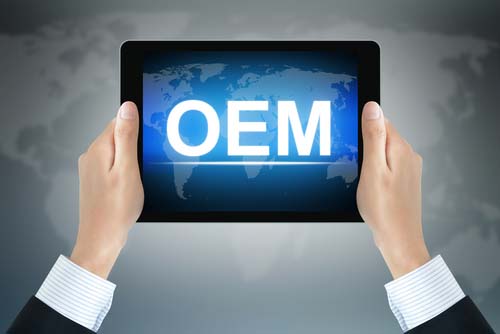
RDS Server and How to Improve It | Parallels
Remote Desktop Services (RDS) is an important component of Microsoft Windows Server that enables users to access session-based desktops. Along with Windows 2008R2, Microsoft renamed Terminal Services to RDS. With RDS, organizations can publish Windows applications or the entire desktop to a remote client via the Remote Desktop Protocol (RDP).
In an RDS server setup, the user interface runs on the server and is streamed to the client device, while the input from the client device is sent to the server. From Windows 2008 R2 onward, the RemoteFX protocol integrates with the RDP protocol, which improves the graphical interface and allows for USB redirection amongst more useful features.
Components of Remote Desktop Services
RDS implements thin client architecture. It allows you to create on-premises and cloud-based virtual applications and desktops that are accessible from any desktop or mobile device.
RDS uses the Remote Desktop Connection client and the RDS server component available in Windows Server 2008 R2 and above in setting up a Windows-based virtual infrastructure.
There are two types of RDS solutions you can use:
- Session-based desktops and applications
- Virtual desktop infrastructure (VDI)
Session-based virtualization provides a multi-session environment for users on a Windows Server network while VDI provides a virtualized client environment to your users.
Regardless of which approach you choose for your virtualization infrastructure, you can use RDS to publish either remote desktops containing the applications needed by your users, or RemoteApps, which are applications that appear to run on the desktop but are actually hosted on a virtual machine (VM).
If you want to provide your users with a consistent user experience, you can use remote desktops, which have the added advantage of allowing you to use their available compute power and memory.
On the other hand, you can use RemoteApps if you want to give your users the ability to customize their own desktops.
Remote Desktop Session Host
Remotes Desktop Session Host (RDSH), as the name suggests, hosts session-based desktops and applications. Users can connect to RDSH servers via a remote desktop connection broker or access remote applications in a session. Users can also save files, run published applications and use resources on those servers.
Starting with Windows Server 2012, you can group multiple RDSH servers in a session collection. You can publish such collections as either session-based desktops or remote applications, but not both. By grouping multiple RDSH servers into a common pool using identical access control lists (ACLs), you can easily load-balance between multiple connected servers.
To publish desktops and applications to endpoints, RDSH leverages a web portal. Users can choose which desktops or applications to access in particular groups so long as they have the right login credentials. Each remote session needs a client access license (CAL), which keeps track of published applications and desktops.
RDSH needs a Hypertext Transfer Protocol (HTTP) for efficient performance, which provides encrypted communication between the client and remote desktop servers. You also need Internet Information Services (IIS) to achieve server capabilities. Additionally, clients and servers must match digital certificates.
Remote Desktop Virtualization Host
Remote Desktop Virtualization Host (RDVH) is a Hyper-V-based service that publishes applications and virtual desktops to virtual machines. When a VM creation request takes place, the associated RDVH is responsible for creating that VM. However, RDVH doesn’t accept direct connection requests; a designated RDSH redirects VM requests to an RDVH. When adding an RDVH, you need to define the pairing with an RDSH in the Remote Desktop Connection Broker (RDCB) manually.
Remote Desktop Connection Broker
Remote Desktop Connection Broker (RDCB) is a user interface that enables users to set up user access to virtual applications and desktops. The console is called the Remote Desktop Connection Manager (RDCM). Using this console, administrators can add RDSHs, RDVHs, and RD Servers with ease.
These resources can be composed and presented to end-users with a URL. End-users can use the URL to access RDS server resources through Remote Desktop Web Access (RDWA) but requires extra configuration and usually firewall settings.
Remote Desktop Web Access
Remote Desktop Web Access (RDWA) is an RDS component that provides access to desktop and virtual applications through a web URL or the Start menu on Windows 7 or higher machines. The configuration requires SSL and local IIS. This URL remains constant even when applications are reorganized or changed.
Every user needs to authenticate themselves by providing the required credentials to access the URL and RemoteApp programs. The HTML experience is minimal and doesn’t fully support graphical UIs.
Remote Desktop Licensing
To access RDSH resources, each device or client should have an RDS client access license (CAL). Remote Desktop Licensing (RD Licensing) manages these RDS CALs. When a user or a device requests a connection from the RDSH server, it contacts RD Licensing to check if the user/device has an RDS CAL.
If available, the RDS CAL is issued for that user/device so that the requested RDS server resources become accessible. The RDS CALs can be either user-specific or app-specific, and their prices range according to their types.
Challenges with RDS Server
While RDS is a powerful remote network tool, there are certain challenges with it. Firstly, the installation and configuration of an RDS server is a complex task. You need to install and configure multiple components such as RDSH, RDVH, RD Licensing, RDS Gateway, RDWA, Network Load Balancing (NLB), and other components.
Secondly, although RemoteFX improved RDP, RDS still delivers slower performance over WAN connections.
Thirdly, when you push your applications through RDS, you might expose your servers, inviting data security concerns. To overcome this challenge, you need to use an SSL VPN, which introduces an extra step to the process.
Another major challenge is the limited support for tablets and new platforms. It gets complicated when you use inconsistent access methods on different devices, leaving a lot of security holes open.
Parallels RAS Enhances RDS Server
Parallels® Remote Application Server (RAS) is a comprehensive virtualization solution that is effortless to install and use. You only need the Remote Desktop Session Host (RDSH), which you deploy automatically during setup. One solution packs all the virtualization components required for your infrastructure. Moreover, Universal Printing and load balancing come auto-configured by default.
Parallels RAS delivers high-performance and enhanced security while also supporting the major platforms and devices, including Windows, macOS, iOS, Android, Linux and Google Chromebooks. From a single pane of glass, you can easily monitor and manage the entire infrastructure-whether it’s publishing an application or managing a user or group account.
Most importantly, Parallels RAS enhances Microsoft RDS with additional features such as device redirection, multifactor authentication and more!
Download a 30-day trial for Parallels ® RAS today and start enjoying the benefits of RDS Server!

